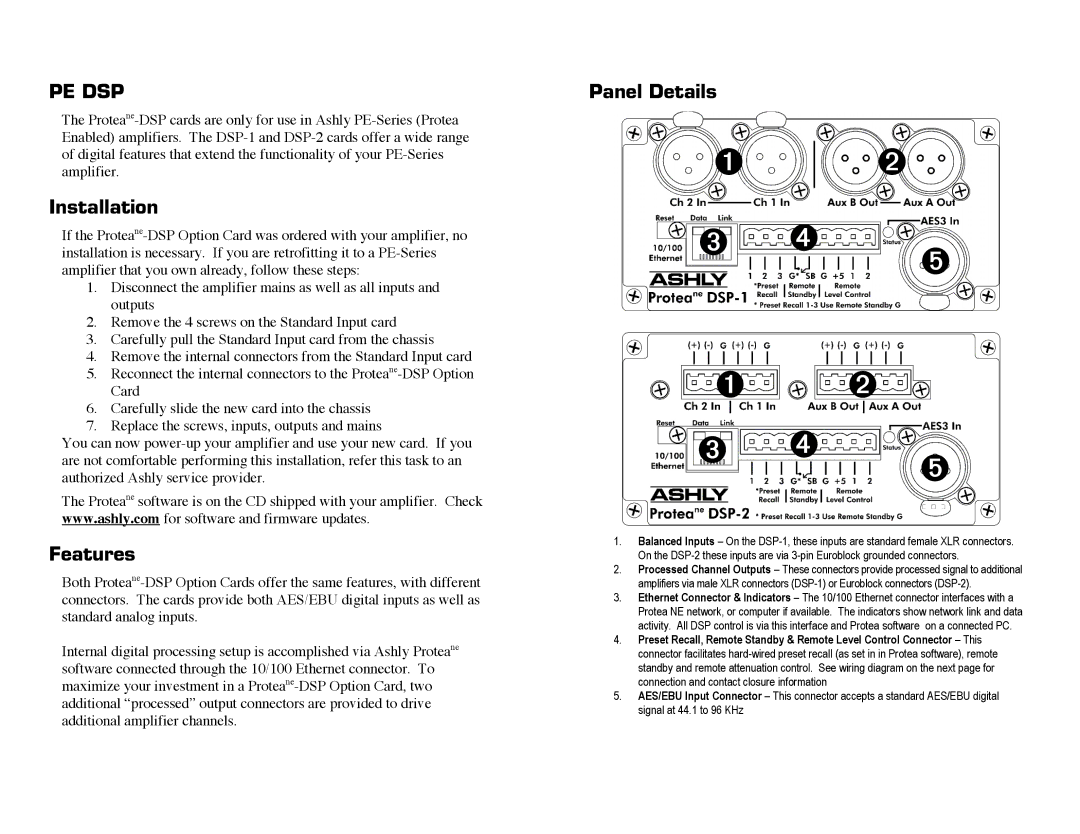DSP1, DSP2 specifications
The Ashly DSP2 and DSP1 are powerful digital signal processors designed for advanced audio signal management in various applications including live sound, installations, and studio settings. These processors are part of Ashly Audio's commitment to delivering high-quality audio processing with user-friendly interfaces and robust performance.The Ashly DSP2 is a 2x4 digital signal processor that provides two inputs and four outputs, while the DSP1 is a simpler version featuring a single input and output. Both devices integrate cutting-edge digital audio technology, offering high-resolution audio processing and flexible routing capabilities.
One of the main features of the Ashly DSP2 is its extensive array of built-in processing tools. These include equalization (EQ), dynamics processing, crossover functions, delay, and routing options. The EQ section supports multiple filter types, allowing users to tailor the frequency response accurately to the specific acoustic environment. The dynamic processing capabilities include compression and limiting, which are essential for controlling dynamic range and ensuring consistent sound levels.
Both the DSP2 and DSP1 are equipped with intuitive user interfaces that can be accessed via a PC or tablet through the Ashly software application. This software simplifies control and configuration, enabling users to quickly set up and adjust parameters without extensive training or experience. The graphical interface allows for real-time monitoring and adjustments, which is crucial in live sound environments.
Another notable characteristic of the Ashly DSP2 and DSP1 is their robust build quality. These devices are designed for durability, making them suitable for both stationary installations and mobile use. Additionally, they feature flexible connectivity options, including analog inputs and outputs, as well as digital AES/EBU connections in the DSP2.
Network control and monitoring capabilities are also integrated into both processors, making it easy to manage multiple devices from a central location. This feature is particularly advantageous in complex audio systems where coordination among various components is critical.
In summary, the Ashly DSP2 and DSP1 digital signal processors are versatile and powerful tools equipped with advanced features for professional audio applications. Their combination of robust processing capabilities, user-friendly software, and durable construction makes them an excellent choice for audio engineers and technicians seeking high-quality sound management solutions.

